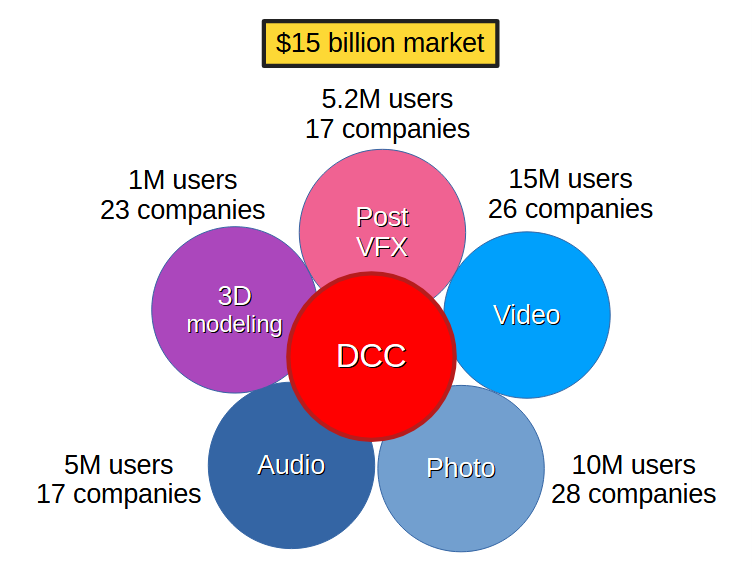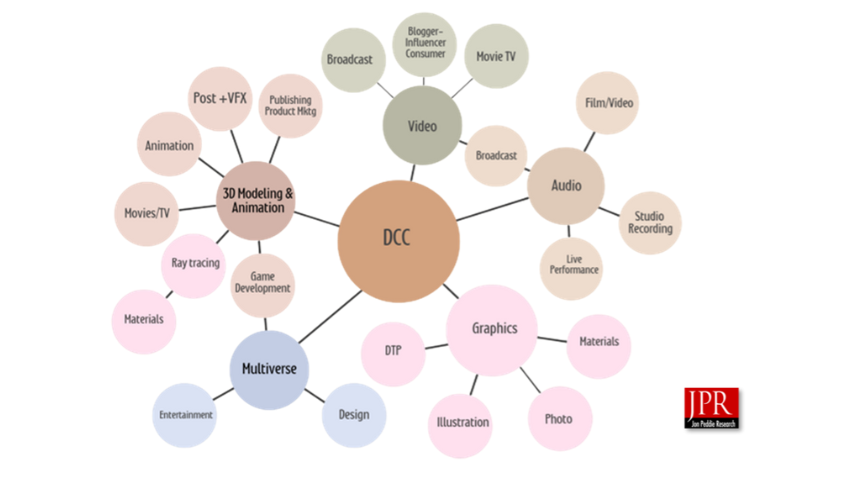Image credit: Jon Peddie Research
Possibly the most far-reaching and diversified industry there is.
SIGGRAPH’s 50th conference celebration highlights the captivating blend of art and science in computer graphics, revolutionizing technology interaction and perception. This field creates and manipulates visual images, powering video game landscapes, lifelike movie effects, and daily device interfaces. Mathematical algorithms and programming unlock the potential for constructing virtual worlds, showcasing the fusion of math and artistry. Advancements like ray tracing bring photorealism to real-time applications. Computer graphics proves versatile, impacting architecture, medicine, data visualization, and various domains. Its collaborative nature unites professionals from diverse fields, driving innovation. Computer graphics exemplifies creativity meeting technology, shaping how we engage with the digital world and permeating daily life.
Of the many delights and awareness that came out of SIGGRAPH this year, its 50th conference, was that computer graphics is truly a fascinating field that has revolutionized the way we interact with technology and perceive the world around us. When I think about computer graphics, I can’t help but marvel at the incredible blend of art and science that it represents.
At its core, computer graphics is all about creating and manipulating visual images using computers. It’s the magic behind those stunning video game landscapes, the lifelike effects in movies, and even the user interfaces we encounter daily on our devices. But it’s not just about making things look pretty; it’s about conveying information, telling stories, and enhancing our understanding of complex data.
One of the aspects of computer graphics that I find most intriguing is the power of mathematical algorithms and programming to create virtual worlds. From basic geometric shapes to intricate simulations of natural phenomena, everything can be constructed with the right equations and code. This intersection of math and artistry is where computer graphics truly shines — no pun intended.
As technology advances, so does the realm of computer graphics. The advent of ray tracing, for example, has brought us closer to photorealistic images in real-time applications. Just a few years ago, achieving such realism was a distant dream, and now it’s becoming a standard in the gaming industry. The continuous evolution of hardware, software, and rendering techniques ensures that the boundaries of what’s possible in computer graphics are constantly pushed.
Another aspect I admire is the versatility of computer graphics. It’s not just about creating imaginary worlds; it’s about enhancing our own. Architectural visualization allows us to explore unbuilt structures as if they were real. Medical imaging aids doctors in diagnosis and surgery planning. Data visualization makes complex information comprehensible at a glance. These applications show that computer graphics has a profound impact on many aspects of our lives — some might say all aspects.
Furthermore, the collaborative nature of computer graphics is striking. It brings together professionals from diverse fields, such as artists, programmers, engineers, farmers, artisans, craftsmen, and scientists of all disciplines. This interdisciplinary approach is what fuels innovation and leads to groundbreaking developments in the field.
In my view, computer graphics is a perfect example of human creativity meeting technological prowess while solving real-world problems and providing entertainment. It allows us to communicate, express, and understand the world in ways we couldn’t have imagined a few decades ago. It’s an exciting journey of pixels, polygons, shaders, and algorithms that continues to shape the future of how we interact with our digital environment.
The diversity of applications, people, geography, and political systems in computer graphics is astounding, delightful, and at the risk of being too enthusiastic, a model for all. It would be difficult to find anyone you know who hasn’t come into contact or interacted with computer graphics in their daily life. And if not directly, then secondarily — anyone who drives or rides in a car or uses any kitchen devices is seeing the results of computer graphics.
If you are reading this (and thank you), then you are most likely involved in and with computer graphics. If you’re an old-timer like me, you will remember in early days having to explain to your friends and family what CG was and then (even more difficult) what you did in it. Now, if someone asks, “What do you do?,” and you say, “I’m in computer graphics.” They say, “Oh.” And then they usually tell you about a friend or family member of theirs who does such and such or works for XYZ company. In our “Digital Content Creation Market” report, we identified over 300 companies that are making software tools used in content creation, with the top 100 serving over 60 million users.

The DCC software universe.
The graphic above is only part of the story — the software part. There is an equally large and diverse hardware segment to the computer graphics industry, but that’s a story for another time.
With billions of people taking photographs and video, enhancing and modifying them, then posting on public platforms like YouTube, TikTok, Instagram, Facebook, and a dozen or more other platforms, almost everyone is a content creator using digital content creation software tools.
Computer graphics has reached the masses, not just for consumption through movies, ads, and games, but through creation now, too. We are all computer graphics’ists.
This article was authored by Jon Peddie of Jon Peddie Research.



